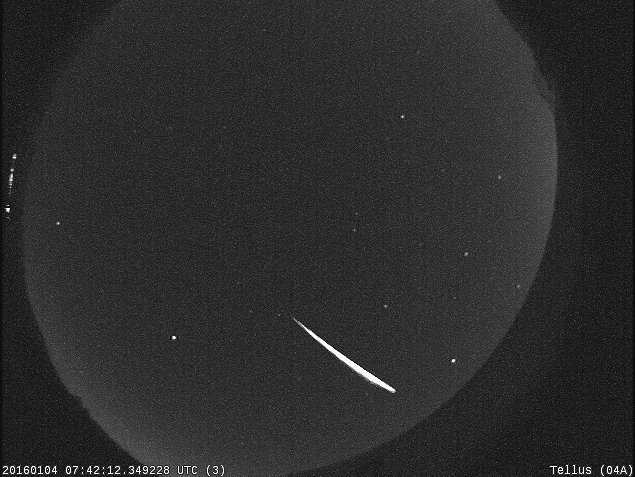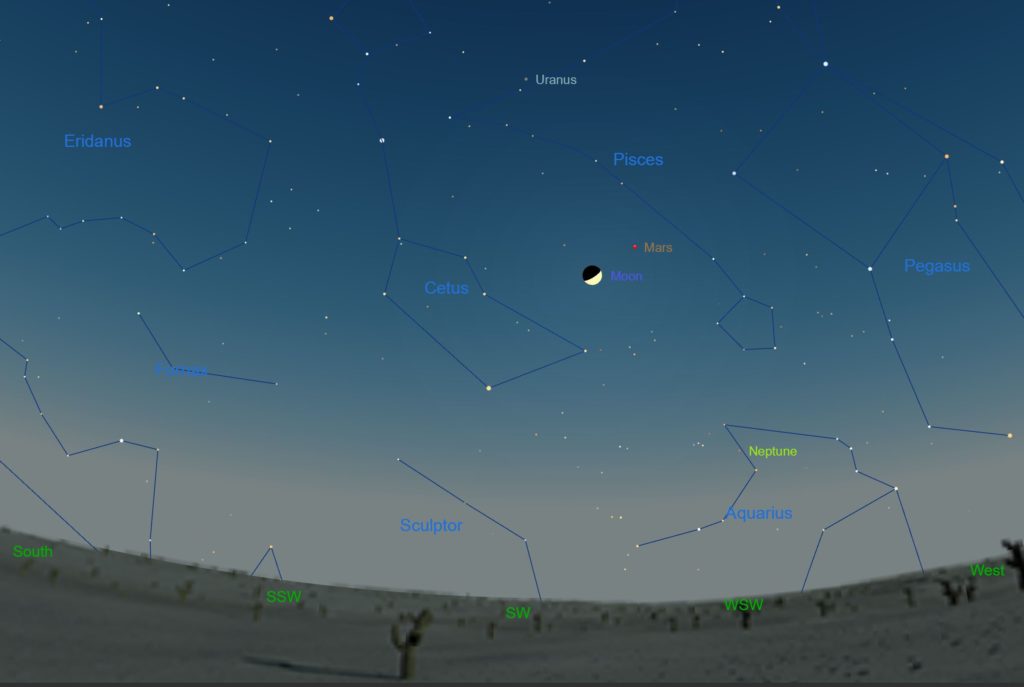
Happy New Year to stargazers everywhere! January 2019 brings a couple of bright and bedazzling planets in the pre-dawn sky and a handful of fainter planets in the evening sky with the Moon to guide the way. There’s a short but active meteor shower early in the month, and a fine total lunar eclipse. Not to mention the usual array of bright constellations, drier winter skies, and early sunsets (north of the equator) to make stargazing more fun. Here’s what to see in the night sky this month…
*** Now Available (U.S. Only) – ‘The Year in Space‘ Calendar for 2019 ***
1 January 2019. Venus, bright and unmistakably prominent in the east/southeastern pre-dawn sky, lies just a finger-width south of the waning crescent Moon.
2 Jan. Saturn reaches conjunction with the Sun. In the coming days and weeks, the planet will slowly emerge in the morning sky and work its way westward on its way to opposition on July 9, 2019.
3 Jan. Earth reaches perihelion, the closest point in its orbit around the Sun. Today, the centers of the Earth and Sun are a mere 147,099,761 km apart.

4 Jan. The Quandratid meteor shower peaks. This brief but sometimes spectacular meteor shower is named after the now-defunct northern constellation Quadrans Muralis, and it often features more than 100 meteors per hour. With the Moon out of the way, conditions are very favorable this year. If you’re up stargazing in the early morning hours of January 4, then take a look. You can see these meteors anywhere in the sky. They trace their paths back to a point north of the bright star Arcturus which rises in the northeast in the pre-dawn hours. This meteor shower favors northern-hemisphere observers.
6 Jan. New Moon, 01:28 UT.
6 Jan. A partial solar eclipse occurs for observers in northeast Asia including Japan, China, South Korea, and Taiwan.
6 Jan. Venus reaches greatest western elongation as it lies 47o west of the Sun in the pre-dawn and morning sky. The beautiful planet rises just over three hours before the Sun in early January. As the month progresses, it moves a little lower in the sky and dims from a dazzling magnitude -4.6 to an only slightly less dazzling -4.3.
10 Jan. The planet Neptune lies about 3o north of the waxing crescent Moon in the constellation Aquarius.
12 Jan. Mars lies about 5o north of the Moon just east of the Circlet of Pisces.

14 Jan. First Quarter Moon, 06:45 UT.
14 Jan. Uranus is about 5o north of the Moon in the constellation Pisces.
21 Jan. Full Moon, 05:16 UT.
20-21 Jan. A total lunar eclipse occurs for observers in all of North and South America. Observers in Europe and Africa can see the eclipse in progress as the Moon sets. This will be a splendid and entirely accessible event that occurs in the mid-evening hours for most observers in the Americas. The eclipse begins at 02:36 UT and ends at 07:48 UT. Greatest eclipse occurs at 05:12 UT. (Convert Universal Time to your local time at this website).
22 Jan. Venus and Jupiter lie just 2o apart in the pre-dawn sky in the constellation Scorpius. This conjunction will be a spectacular sight without optics, but if you have a telescope and a wide-field eyepiece, put the two planets in the same field and enjoy the view! Jupiter is vastly outshone by Venus, but the planet is brighter than any star and brightens to magnitude -1.9 by month’s end on its way to a June 10, 2019 opposition.

27 Jan. Last Quarter Moon, 21:10 UT.
31 Jan. Jupiter is just 3o south of the waning crescent Moon.
31 Jan. At about 18:00 UT, Venus is a tiny fraction of a degree south of the waning crescent Moon. It’s a beautiful sight in the pre-dawn sky to end the first month of 2019.